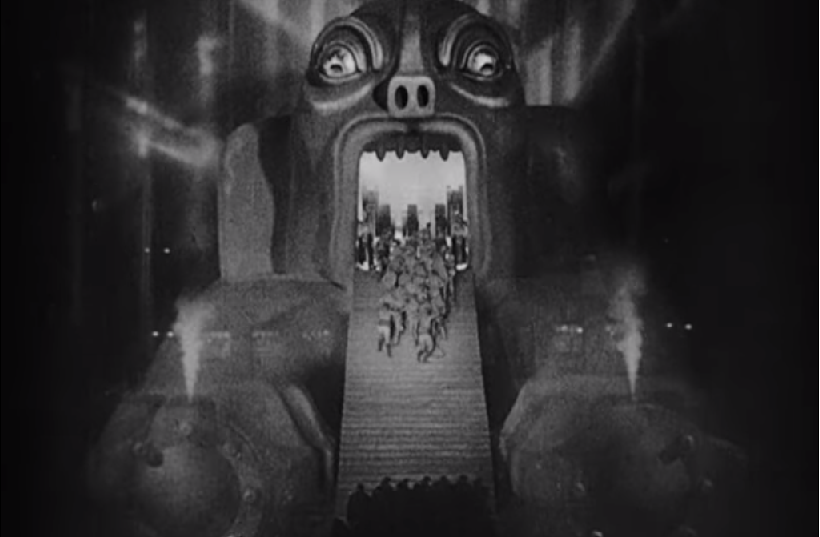Movie Review: Metropolis (1927) directed by Fritz Lang
Metropolis is the city of the future; brightly lit skyscrapers connected by sky highways, and grand gardens where the children of the elite play. Metropolis is the city of the future; workers spend half their days working at dangerous machines they do not fully understand the function of, then shuffle off to their sunless dormitories far below the surface of the earth. Metropolis is both these cities, and a city divided against itself cannot stand.

Freder (Gustav Frolich) is one of the most privileged people in Metropolis. His father Joh Fredersen (Alfred Abel) is the head of the government which is run like a business. But Freder knows nothing of what has to be done to run the city, spending his time on sports and cavorting with girls trained for the purpose. That is until one day he sees Maria (Brigitte Helm), who has brought a gaggle of workers’ children to the sky gardens to see how their brothers live. This appears not to be actually illegal, but is. not. done., so Maria and the kids are quickly sent off by the servants. Freder, however, is intrigued by this young woman who is unlike anyone he’s ever met.
While searching for Maria, Freder learns for the first time of the inhumane working conditions inflicted on the city’s laborers, and witnesses an industrial accident caused by overwork. The machine is directly compared to Moloch, whose fiery belly requires human sacrifice. Freder goes to confront his father, who assures him that the workers are being treated as they deserve.
Joh Fredersen is not, however, entirely unaware that the city’s treatment of its labor force is unjust. He fears unrest, and knows that something is going on underground. His plan, however, does not involve allowing unions or compliance with OSHA regulations. Instead, he turns to his old friend and former romantic rival, the mad scientist Rotwang (Rudolf Klein-Rogge.)
Years before, the two men had competed for the affections of the beautiful Hel, who wound up marrying Joh Fredersen and died giving birth to Freder. Rotwang has since lost a hand (replacing it with an apparently mechanical prothesis) and creating a Machine-Man that can be given a human appearance. Rotwang’s plan is to make the robot into a copy of Hel for his very own. Joh Fredersen has other ideas. He orders that the Machine-Man be turned into a copy of Maria. It seems that Maria has been preaching the idea that the workers and owners can be brought together by a mediator that has the best interests of both sides in mind. Joh Fredersen wants the workers to revolt in a controlled manner so that he’ll have an excuse to crack down on them and replace them with robots.
Rotwang is aware, as Joh Fredersen is not, that Freder and Maria have made contact, and Freder is the long-awaited mediator. He kidnaps Maria and creates the False Maria, but with instructions to turn both the elite and workers into mobs that will between them destroy the city and get Rotwang’s revenge.
This film is one of the classics of science fiction cinema, directed by Fritz Lang from a script/novel written by his wife, Thea von Harbou. The special effects are amazing by 1927 standards, and are still very watchable today. The film was heavily influenced by German Expressionism, and is full of symbolism that does not attempt to hide its nature. If you are used to the language of silent film acting, it does a good job of conveying emotion and character.
The version I watched was the 2010 Kino restoration with about half an hour of footage restored from an Argentinian print. It’s still quite good without that footage, but some plot points get obscured in the shorter cuts. Unfortunately, since the Argentine film was badly damaged, the clarity of the picture suffers. This cut also uses a close version of the original film score.
Younger audiences might find this movie a harder pill to swallow. Between having to read intertitles, the peculiarities of silent film acting, and the substantial length, middle schoolers and below may find their seats squirming. High schoolers who’ve been eased in with shorter silent films should be okay. On the content front, there’s suicide, and an extended erotic dance by the False Maria.
Highly recommended to science fiction fans and cinema fans.

